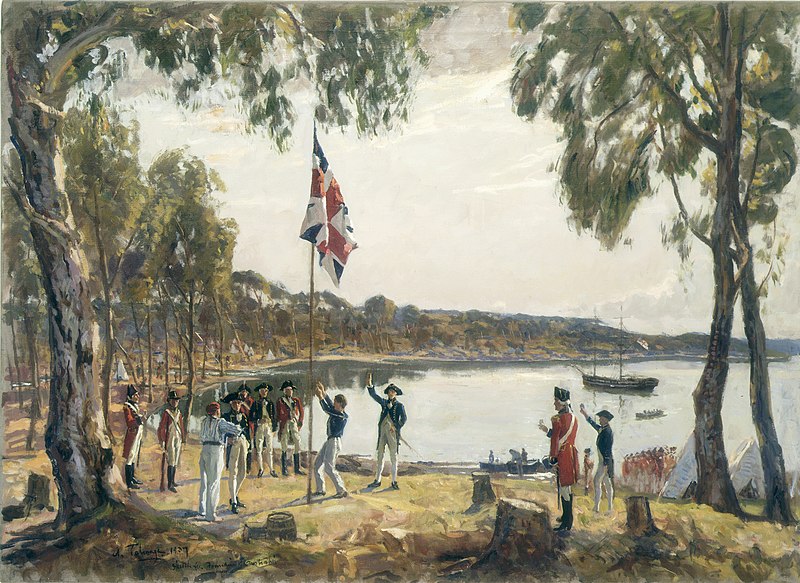
Last week’s article about Australia Day got me thinking some more about its meaning.
The date, 26 January, comes from the day in 1788 when Captain Arthur Phillip, along with the crew of his ship the Supply, gathered on the shore of Sydney Cove to hoist the British flag. They had anchored off the cove, now called Circular Quay, the day before.
This historic event is depicted in the famous 1937 oil painting by Algernon Talmage, below:
By raising the flag, Phillip was claiming British sovereignty over the eastern part of Australia, then known as New Holland. He thereby brought to our land the English common law, with its protections of individual rights and freedoms.
A central element of the common law is that the law should apply equally to everyone. This Judaeo‑Christian principle comes from Genesis 1:27 – God created all people in his own image. His laws applied equally to the people of Israel, and to strangers who were living among them (e.g. Exodus 12:49).
The apostle Paul expressed the same notion when he spoke in Athens: “The God who made the world and everything in it ... made from one man every nation of mankind to live on all the face of the earth.” (Acts 17:24-26)
The British government intended to treat colonists and natives equally as British subjects. The Proclamation of South Australia, read out under the Old Gum Tree at Glenelg on 28 December 1836, stated Governor Hindmarsh’s resolve: “to take every lawful means for extending the same protection to the Native Population as to the rest of His Majesty’s Subjects”.
However, the lived experience of indigenous Australians has fallen far short of this aim. The often‑tragic story is documented by John Harris in his monumental work, One Blood: 200 Years Of Aboriginal Encounter With Christianity: A Story Of Hope.
Nevertheless, significant progress has been made towards equal treatment of indigenous Australians since colonisation.
When Australia became a nation at federation on 1 January 1901, all Australians – including indigenous people – were considered British subjects.
This changed when federal parliament passed the Nationality and Citizenship Act 1948. It came into effect on Australia Day, 26 January 1949. Australians, including indigenous Australians, were now Australian citizens who could carry Australian rather than British passports.
Today, indigenous Australians have taken their place in many different areas of Australian society. There are now six indigenous MPs in federal parliament, including Ken Wyatt (Lib), Minister for Indigenous Australians, Pat Dodson (ALP) and Jacqui Lambie (JLN). They make up 2.6% of federal MPs, approaching the 3.3% of indigenous people in Australia.
Over the past 50 years, eight indigenous people, including Evonne Goolagong Cawley, Cathy Freeman and Adam Goodes, have been honoured as Australian of the Year – 16% of recipients.
Jacinta Nampijinpa Price, indigenous activist and Alice Springs deputy mayor, has called on those fighting for indigenous rights to “invest their energy into supporting practical outcomes to overcome family violence, child sexual abuse, youth suicide, alcohol and substance abuse in our indigenous communities.”
Much more is needed to address disadvantage and enable indigenous Australians to fully participate in Australian society. In doing so we would do well to uphold the Judaeo-Christian principle that we are all “one blood”, made in God’s image, under one law applying equally to all.
I would welcome any thoughts you have on these important matters. And, if you are able, a donation to this ministry would be greatly appreciated.
Peter Downie - National Director
FamilyVoice Australia

